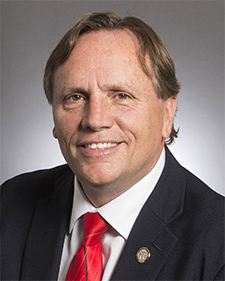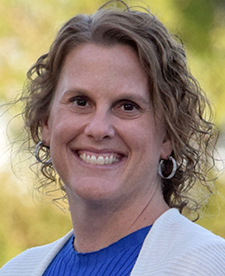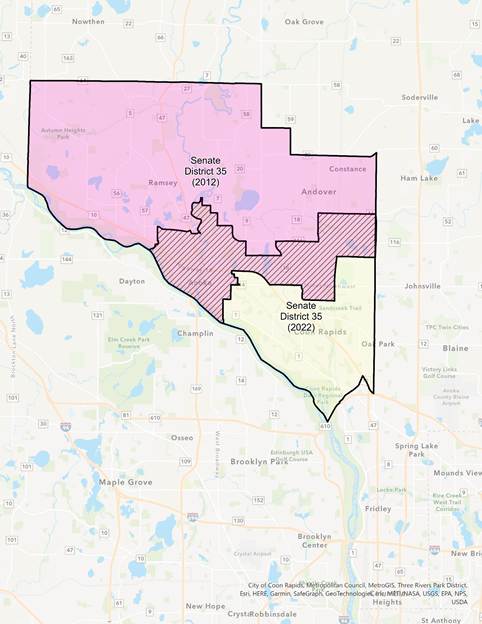Want to have the political world beat a path to your door? Be unpredictable, like the suburbs around most American cities.
Urban voters are reliably Democratic and, increasingly, rural voters are safely Republican. While first-ring suburbs are trending Democratic, too, there are votes to be won and legislative seats to be claimed by both parties in suburban districts farther from the urban core where voters are more likely to react to changing issues than to party labels.

In 2022, three of the five most-watched state Senate races and seven of the 15 most-watched House races are in the suburbs around the Twin Cities, including GOP Sen. Jim Abeler’s 35th District, which covers parts of Anoka and Coon Rapids north of the metro.
Because of their growing and changing populations, suburban districts were especially exposed to new redistricting lines. Republicans are hoping they will listen to messages that blame Democrats for inflation and increasing crime rates; Democrats are counting on suburban voters – especially women – thinking about the June U.S. Supreme Court ruling in Dobbs v. Jackson Women’s Health Organization and placing abortion top of mind when they vote.
While Abeler and DFL challenger Kari Rehrauer are thinking about their own races, they also know that they are personifying those demographics and political strategies. Court-crafted redistricting has turned Senate District 35 from a safe district, one that Republican Abeler has held through three elections, into a toss-up. And national issues of inflation, crime and abortion dominate.

All are attracting significant spending from outside groups.
“The spending in this race is a reflection of how important this election is,” Rehrauer said. “A close race gets a lot of attention, but personally I’m just gonna keep focusing on knocking on doors and having direct conversations with people.”
House and Senate control up for grabs
Republicans won control of the state House of Representatives in 2014 and 2016 by winning races both in Greater Minnesota and the suburbs. In 2018, the first midterm following Donald Trump’s election, House DFLers targeted what was termed the Hillary 12 – seats that the Democratic presidential nominee carried in 2016 but that elected GOP legislators.
They won all 12.
Republican Paul Anderson delivered the Senate majority to his party in 2016 by winning a Plymouth-based seat by 195 votes. Anderson was the majority maker despite Little’s equally surprising upset in Lakeville. Anderson didn’t run in 2020, and the seat was claimed by the DFL.
Overall,the suburbs are an increasingly significant part of the state electorate that is showing signs of moving toward the DFL. Allison Liuzzi, the project director for Minnesota Compass, the data center for the Wilder Foundation, breaks the state into three geographic groupings: the cities of Minneapolis and St. Paul, the suburbs in the seven counties that make up the rest of the Twin Cities metro, and Greater Minnesota.
“They are our largest voting bloc,” she said of the suburbs. In the 2020 election, 44 percent of voters were from these suburban areas, about 20,000 votes more than Greater Minnesota (the final 12 percent are from the two cities). But in 2014, more voters came from Greater Minnesota than the suburbs, 46 percent to 43 percent.
And suburban voter turnout leads a state with overall high turnout. In 2020, suburban precincts had 84 percent of voters cast ballots compared to 73 percent in the two cities and 76 percent in Greater Minnesota.
“There’s a lot of power there and that’s a shift in the last two elections,” she said.
They are also trending, though not yet overwhelmingly, voting for Democratic candidates. In the 2016 election, 49 percent of suburban voters supported Hillary Clinton at the same time that 77 percent of Minneapolis-St. Paul voters supported the Democratic nominee and 35 percent of Greater Minnesota voters cast Democratic ballots.
But in 2020, Liuzzi said, 56 percent of suburban voters supported Joe Biden. While the Democratic share of the vote increased that year among voters in all three regions, the increase was 8 points in the suburbs, 6 points in the cities and 4 points in Greater Minnesota.
In two U.S. Senate elections, the suburban vote swung 12 points toward Democratic candidates between 2014 and 2018.
Liuzzi said the first-ring of suburbs around the urban core are becoming solid DFL areas, what she called a “pushing-out phenomena” from the cities to the suburbs. There is also a growth of people of color in the suburbs that could correspond with the increase in DFL support.
“Statewide, all of our population growth is coming from people of color,” Liuzzi said. “Births, young families or in migrations, we would be losing population if it were not for our BIPOC population.” The communities of color share of the voting population is growing faster in the cities and suburbs, but she said it is occurring in Greater Minnesota as well.
Changing demographics in the suburbs
The voting precincts that make up the new 35th Senate District went for Donald Trump in 2016 by 5.7 points but favored Joe Biden four years later by 4.2 points. A composite of results in statewide races between 2016 and 2020 shows a narrow Democratic advantage of 4.2 percentage points.
Liuzzi’s Minnesota Compass staff found that the demographics of the district changed significantly under the new maps. A district with a people of color representation of 10.4 percent in 2012 is now 25.1 percent people of color, and there’s a similar increase among people old enough to vote.
Abeler is a fixture around the State Capitol. A chiropractor and business owner in Anoka, Abeler filled a House seat from 1998 to 2016 and the Senate seat since then. He was an unsuccessful candidate for the GOP nomination for U.S. Senate in 2014. As chair of the Senate Human Services Reform Finance and Policy Committee, Abeler has been an advocate for long-term-care funding and services and was a critic of state closures of adult day care centers and the response to infections and deaths in nursing homes in the early months of the pandemic.

Rehrauer is a school teacher who is currently working as a field staffer for Education Minnesota, the state’s teachers union. The Wisconsin native moved to Minnesota to attend the University of Minnesota and remained. She has lived in Coon Rapids for 20 years and is in her first term as a member of the Coon Rapids City Council.
Both candidates said they heard a common set of issues from voters while doorknocking: inflation, public safety and abortion. Most of the third-party mail against Abeler calls him extreme on abortion and cite his support for a 2014 bill that would have banned abortion at the point where sponsors said a fetus could sense pain. That is about 20 weeks of gestation. The bill contained an exemption if the life of the mother is at risk. Abeler said by then, a pregnancy that resulted from rape or incest would have already been terminated had the mother made that choice.
“I think most Minnesotans would agree with 20 weeks,” Abeler said. During a League of Women Voters forum, Abeler said, “My record is clear. I respect the woman and I always respect the life inside of her. There has to be a way to have a better dialogue than we’ve had.”
Rehrauer says she supports abortion access and said the decision should be made by women and their health care providers.
“There is no doubt in this election a woman’s right to privacy and reproductive freedom is under threat,” Rehrauer told the LWV forum, noting that Abeler has a 0% score from Planned Parenthood and an “F” grade from Pro Choice Minnesota.
When public safety comes up at front doors, Abeler said people express fears that urban crime will spread to their suburban towns. He said many people say they have stopped visiting Minneapolis.
Rehrauer says she tells voters that Coon Rapids has been successful keeping crime rates from increasing and how she voted to add two officers and one social worker to the city staff.
One issue Abeler wishes would come up more, that doesn’t, is his specialty of long-term care. An increase in funding for care centers to increase pay and attract more staff was one of many proposed uses of the state surplus that died when a compromise budget deal collapsed as the regular session adjourned in May.
“There’s no politics in that, unfortunately,” he said. “I thought it would catch on because so many are collapsing. It’s too complicated unless you think about your mom or if you have someone with Down’s Syndrome or some disability. Which is too bad, because it’s a pretty important policy thing.
For her part, Rehrauer said the issue that doesn’t come up much is election security and the Jan. 6 violence at the U.S. Capitol.
“Honestly, those issues have very rarely come up,” she said. “Similar to how I’m trying to tune out the negative noise, I think people in our community want to tune out the negative noise. They’re thinking about their family, their kids, how they’re going to pay their bills. That’s really what comes up every day.”


0 Commentaires